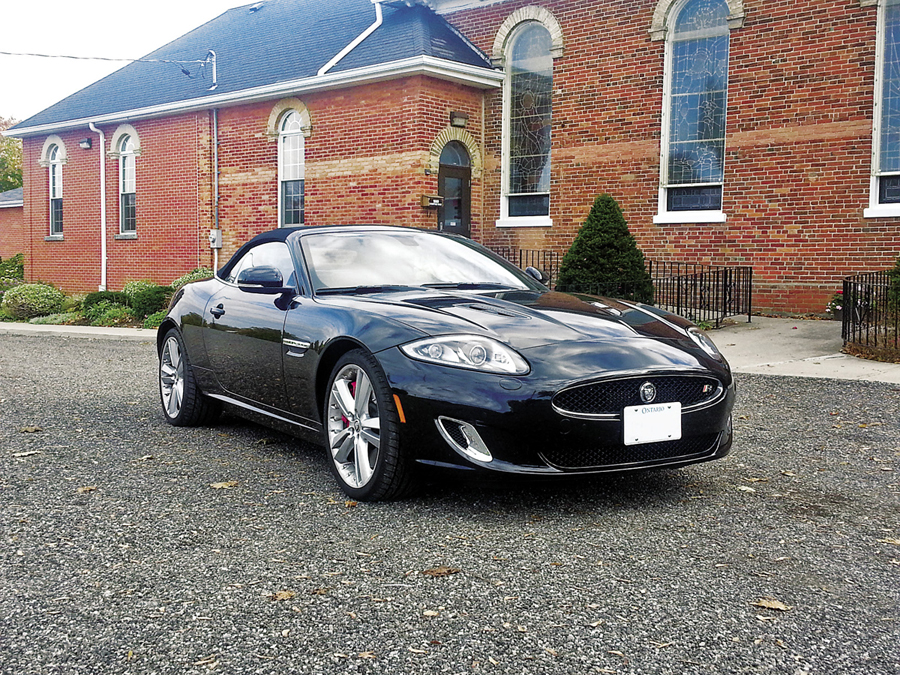 A truly captivating experience
A truly captivating experience
There’s something about fine British luxury cars. I don’t know what it is exactly – it’s a sensation that is very difficult to express – because it’s not like these cars possess anything their counterparts from Germany, Japan and elsewhere do not, at least not in terms of things that can be quantified. Those marques produce cars that come loaded with just as much advanced technology and refinement, and are backed with pedigrees just as impressive as their U.K. Counterparts.
So, if it can’t be measured, then what is it? Perhaps it’s something more subtle, more ephemeral. Perhaps it is a feeling that can transport (figuratively and literally) its occupants and take them on an emotional journey as well as a physical one, making them feel as if they’re someone else (and somewhere else), even if it’s only for a fleeting moment.
Ah, perhaps I’ve hit upon something.
Having driven several different offerings from BMW, Mercedes, Audi and Lexus in the past year, I can say that each are impressive in their own ways, to the point that trying to decide which one is ‘better’ is like trying to pick a favourite child – it’s a no-win situation. They are all great cars.
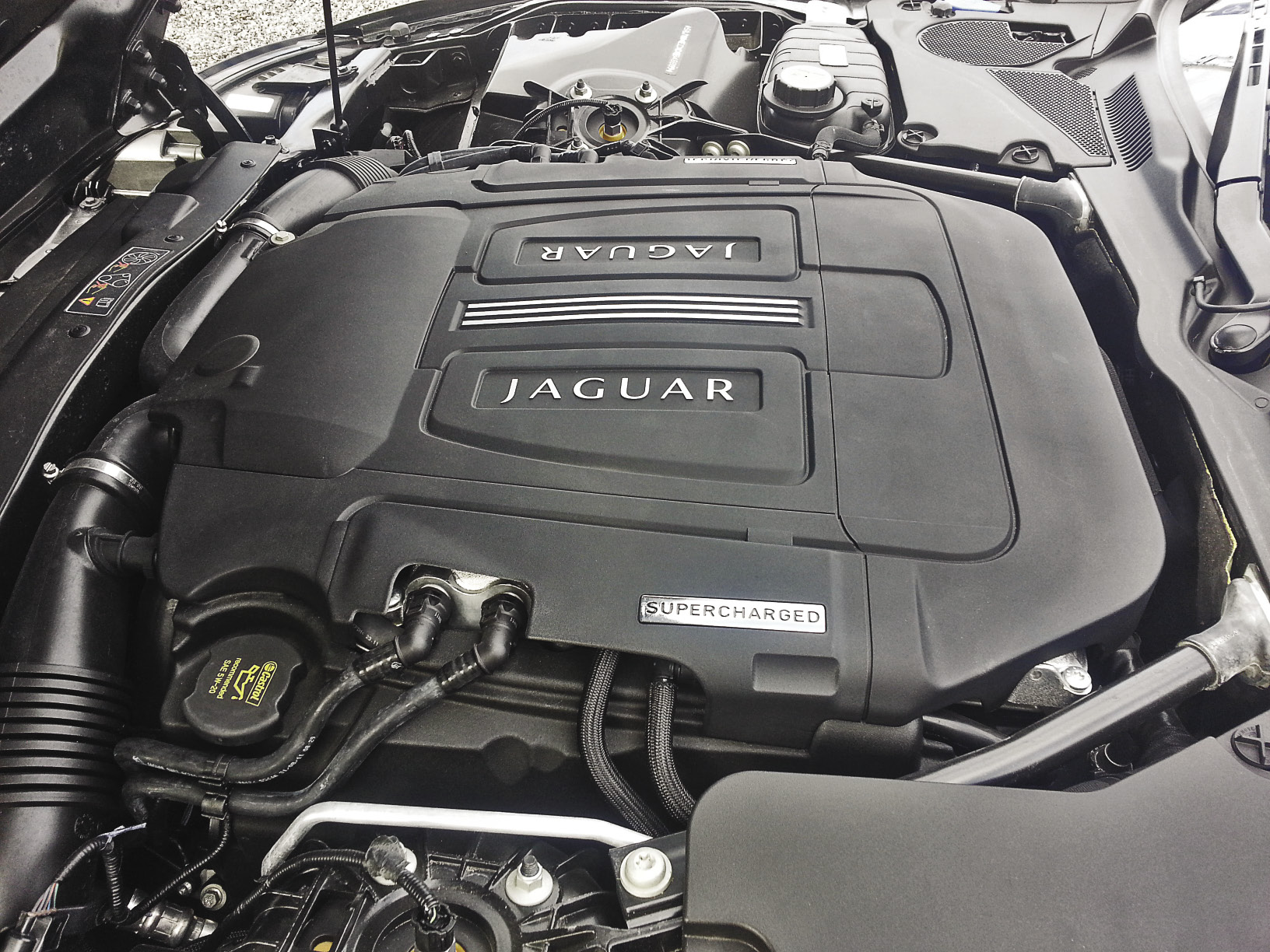
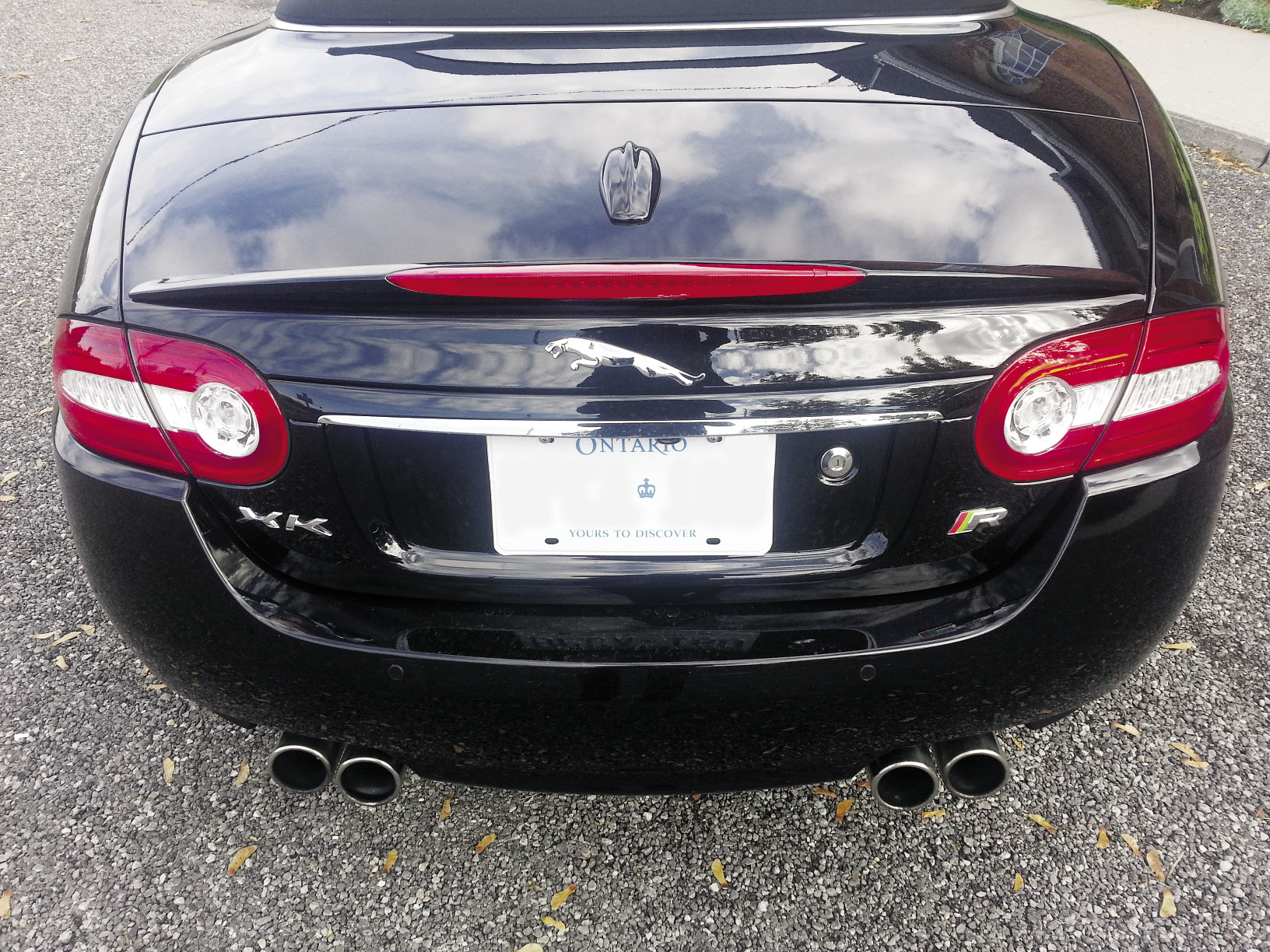
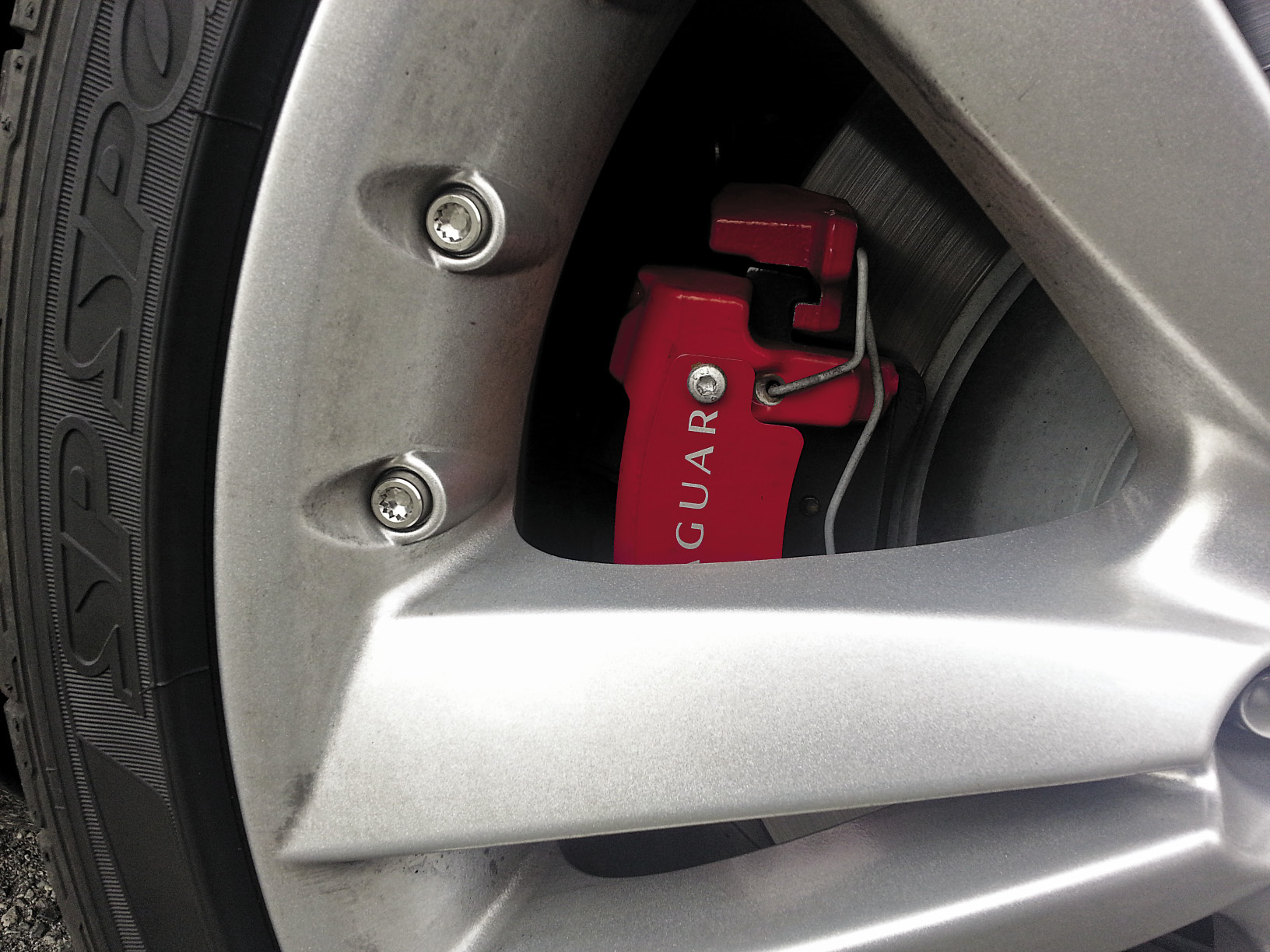
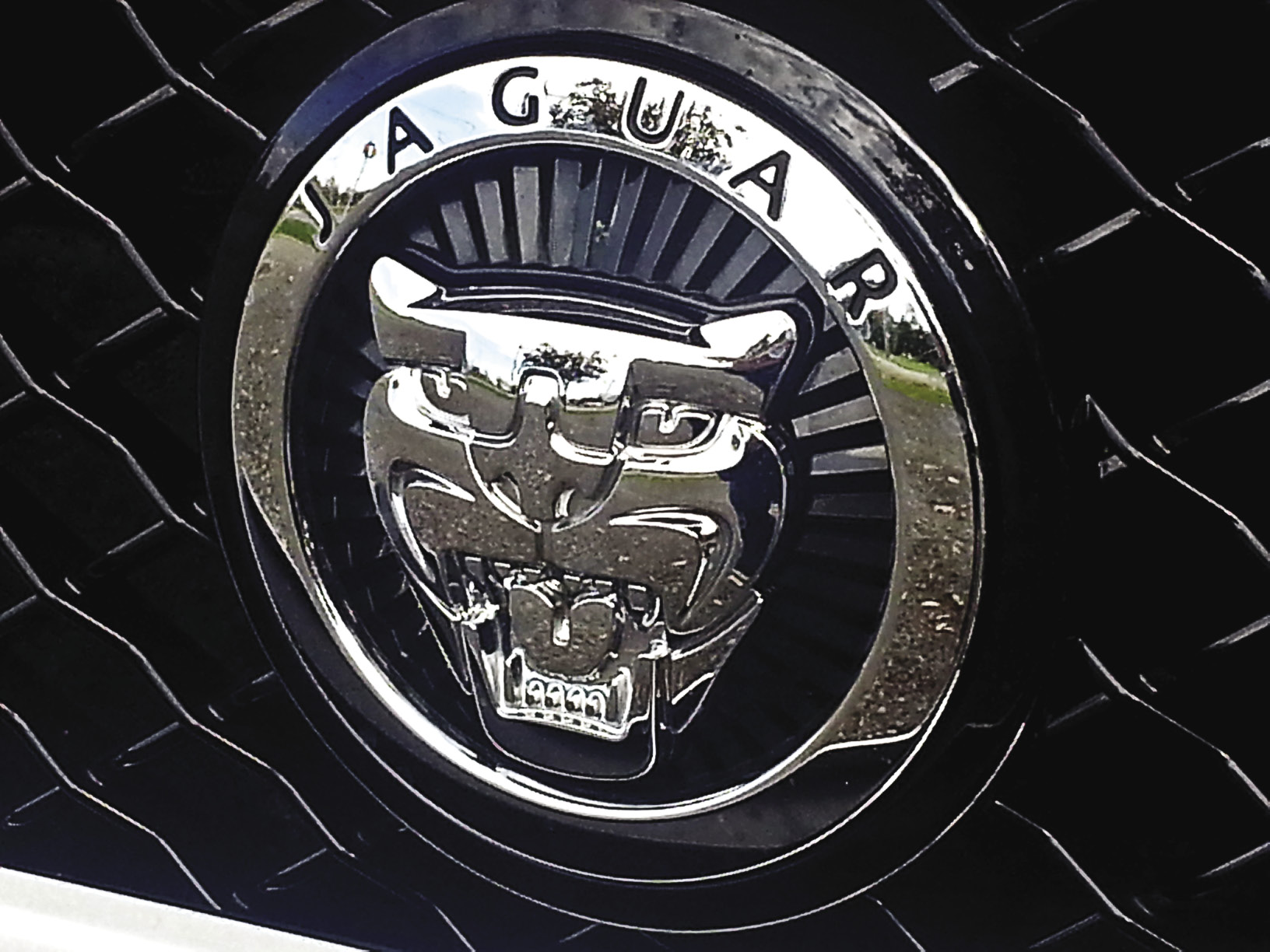
As great as they were, however, none were truly exhilarating to drive, save for the BMW M6, which I had the good fortune of driving on track at Laguna Seca last August (Ignition, Winter 2012-13). That experience did produce a great deal of fun, but let’s face it, MANY cars would be fun on a track as challenging as Laguna, so that must be taken into account, as excellent as the M6 is.
But, sliding behind the wheel of a Jaguar – especially one as dripping with sleekness, immense power and exquisite details like the XKR Convertible I had the pleasure of driving recently – is an experience quite unlike the others. This car delivers an emotional wallop I was not expecting, nor had I experienced with the other marques, as impressive as they are.
The one thing that is immediately apparent with the XKR is that it not derived from something as utilitarian as a four-door sedan. The XK series is strictly a coupe/convertible platform and it has remained as such since it was introduced in 1996 to replace the famed XJS.
The XKR’s immediate predecessor, the XK8, set the bar high with a slippery, handsome wedge-shaped exterior design that was in keeping with the marque’s grand touring tradition. The XK8 was the first offering to be powered by the company’s new four-litre AJ V8 engine, a unit that has subsequently been used (in various forms) in a number of Jaguar, Land Rover, Aston Martin and Ford products.

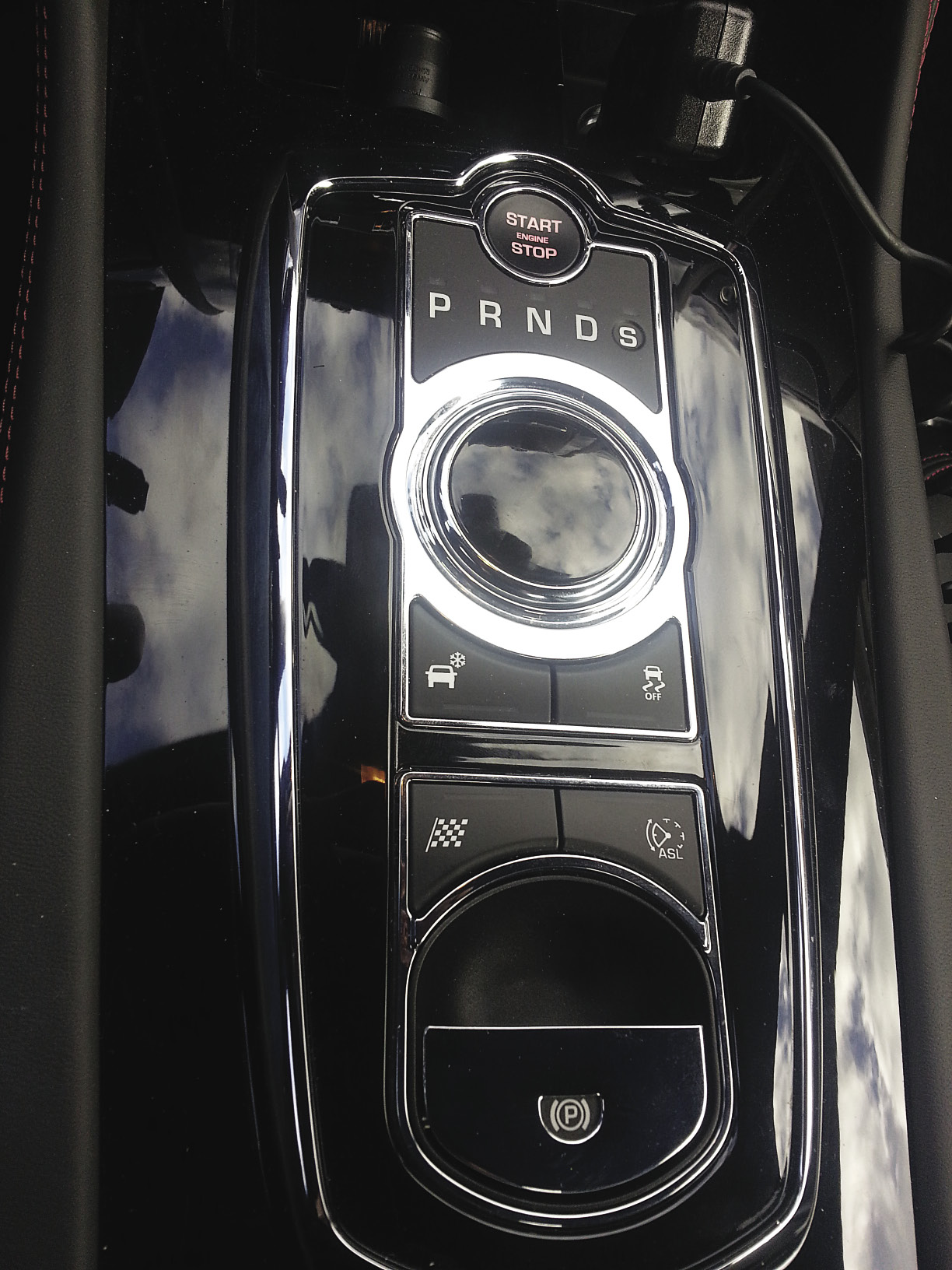
After nearly a decade in the lineup, the company unveiled the XK8’s successor at the 2005 Frankfurt Motor Show, the aluminum-bodied XK series. Designer Ian Callum, who had penned both the Aston Martin DB7 and the V12 Vanquish, updated the elegant XK8 design, which included, among other changes, a new front grille inspired by the company’s classic sports coupe, the 1961 Jaguar E-Type.
Initially powered by the 4.2-litre version of the AJ V8 producing 300 horsepower (a supercharged variant produces 420 in the XKR), the lighter and more rigid XK series platform received a significant power boost when the engine was enlarged to its current five-litre displacement through a stem-to-stern redesign in 2009 (2010 model year in North America). Horsepower with the Gen III edition jumped to 380 (with 380 lb-ft of torque) in the base XK and to 510 in supercharged form (with 461 lb-ft or torque) in the XKR.
Save for minor revisions to the headlights, tail lamps and bumpers (coinciding with the engine redesign), the XK cars don’t look much different now than when they debuted nearly a decade ago.
Despite not changing much through the years, the XK has aged quite well, at least to these eyes. Finished in British Racing Green with a black, suede and leather-trimmed interior, my XKR Convertible tester looked the part of a classic grand tourer – a fine, British motor car.
Equipped with a list of features as long as your arm – everything from a 16-way power adjustable, heated and cooled driver’s seat to a custom-designed, 525-watt Bowers & Wilkins speaker array, touchscreen navigation system and backup camera are standard issue – the XKR envelopes its occupants in the lap of luxury.
Mechanically, as mentioned, the XKR is propelled by a supercharged V8 engine capable of launching the car to 100 km/h from rest in just 4.8 seconds and can achieve a governed top speed of 250 km/h.
As one would expect, all of the fun comes with a very steep price of admission. In addition to all of the standard goodies the XKR comes with, my tester also has a few extras, which push an already extravagant base price north of $120,000.
Outrageously expensive? Yes, for most of us the asking price is well beyond the realm of what is attainable, but isn’t that part of the allure – the charm – of Jaguar?
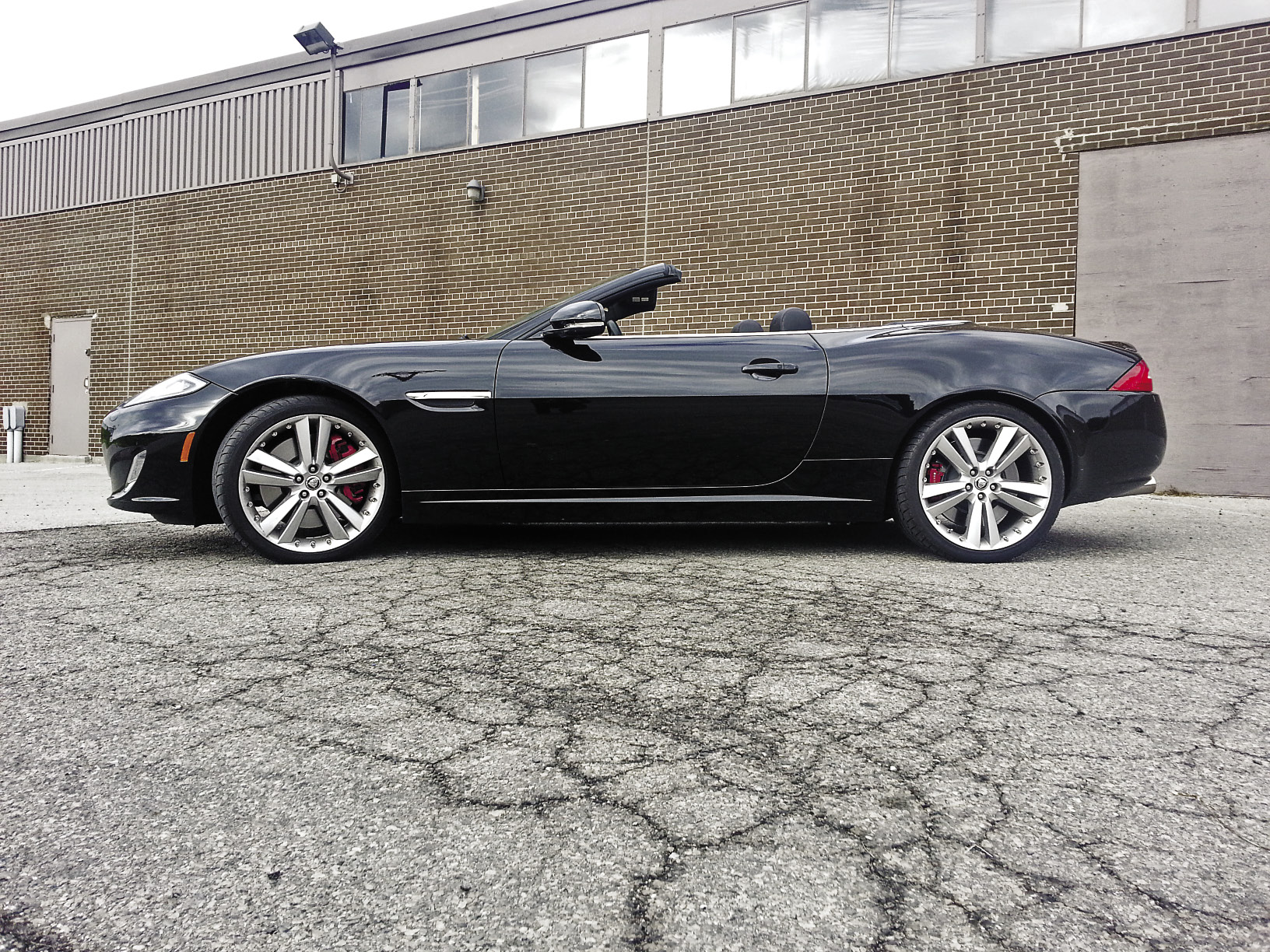
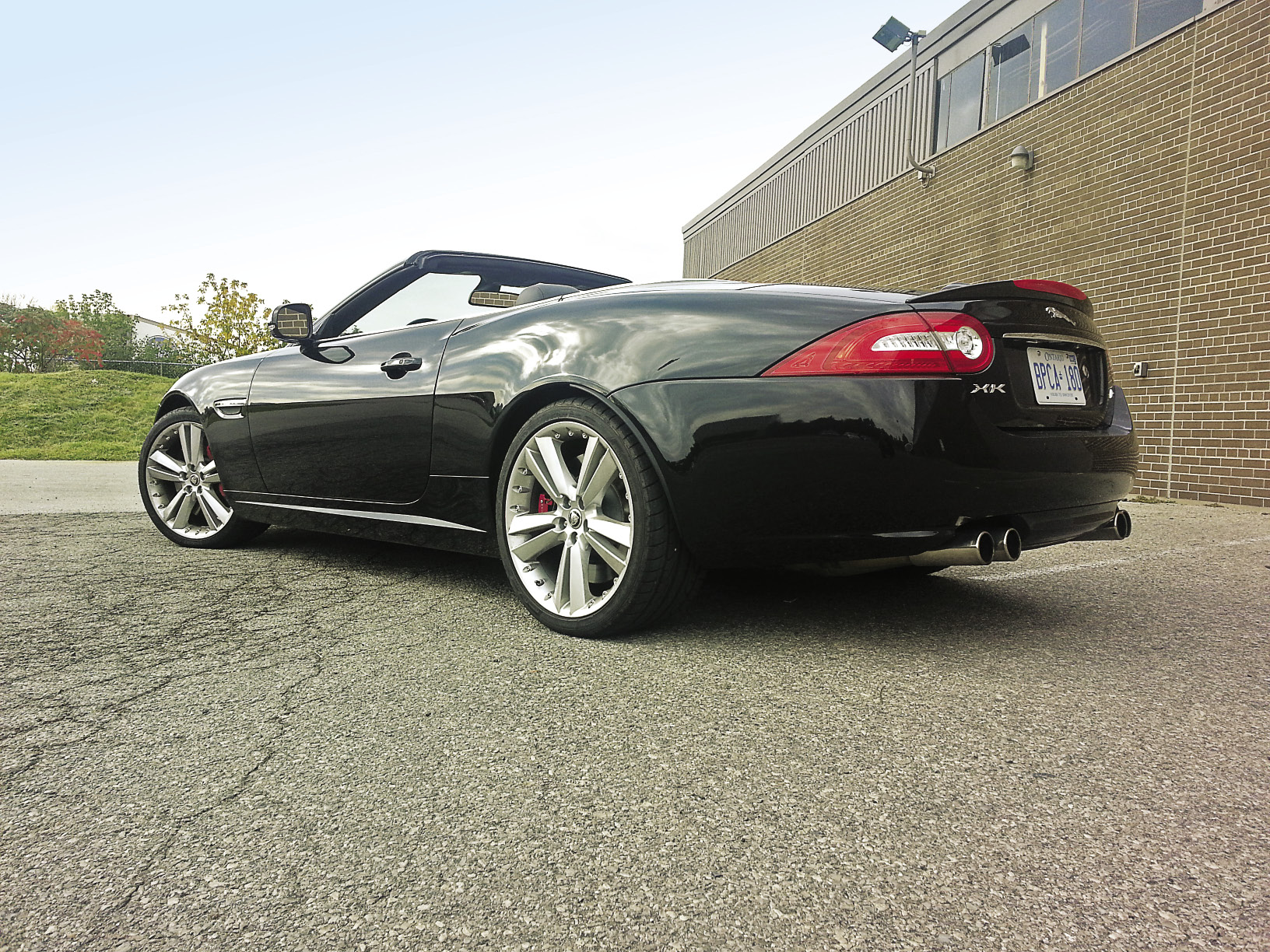
Impressions
From all angles, the XKR convertible is a handsome car. Finished in a dark colour, as my tester was, it looks like the big feline from which the brand gets its name – sleek, muscular and beautiful.
Large headlamps (the adaptive HID variety) frame an open-mouth grille that evokes Jaguars of old while flared fenders make room for huge optional 20-inch alloy wheels shod in fat, sticky Dunlop rubber provide strong hints this Jag isn’t just some courtly carriage designed to ferry lords and ladies to and from the opera – this baby is bad fast, too.
Unlike some, I’ve never been a huge lover of convertibles. If I lived in California or Florida I’d likely see the merits of owning one, but with our short warm weather season they don’t make a ton of sense in Canada unless, of course, one is able to park the drop-top in the garage for half the year.
Given most XKR convertible owners are likely to own at least one other car, the impractical nature of owning one probably doesn’t cross their minds very often. Although this car is most attractive in coupe form, the convertible is quite a looker too, especially with the top down.
Climbing into the well-appointed cabin, I am immediately struck by how cocooned one is while inside this car. The long, heavy doors shut the world out with a vault-like thunk, the form-fitting seats (did I mention they adjust 16 different ways?) hold occupants in low-slung comfort, and the XKR’s feature-laden interior surrounds with exquisite luxury.
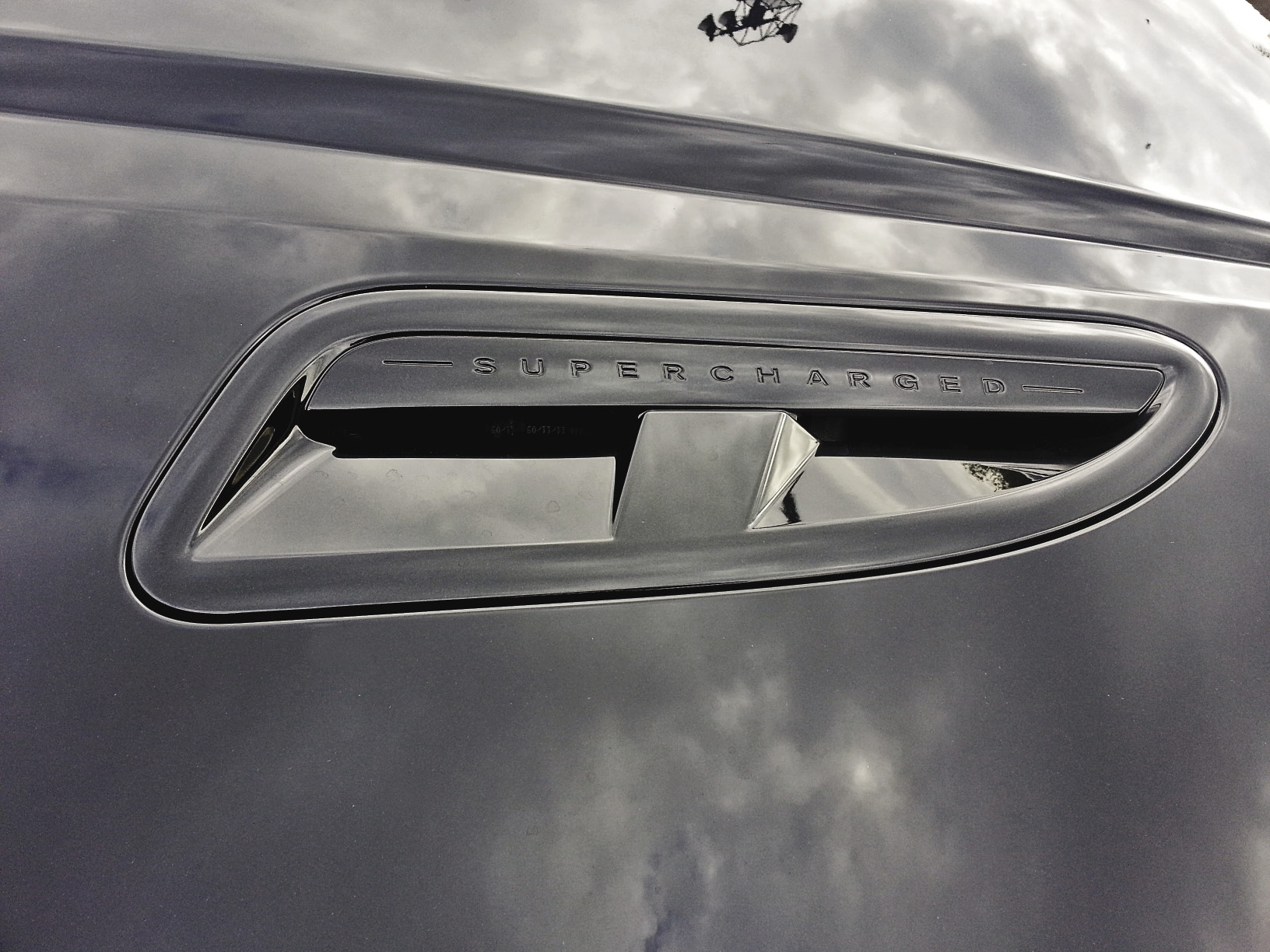
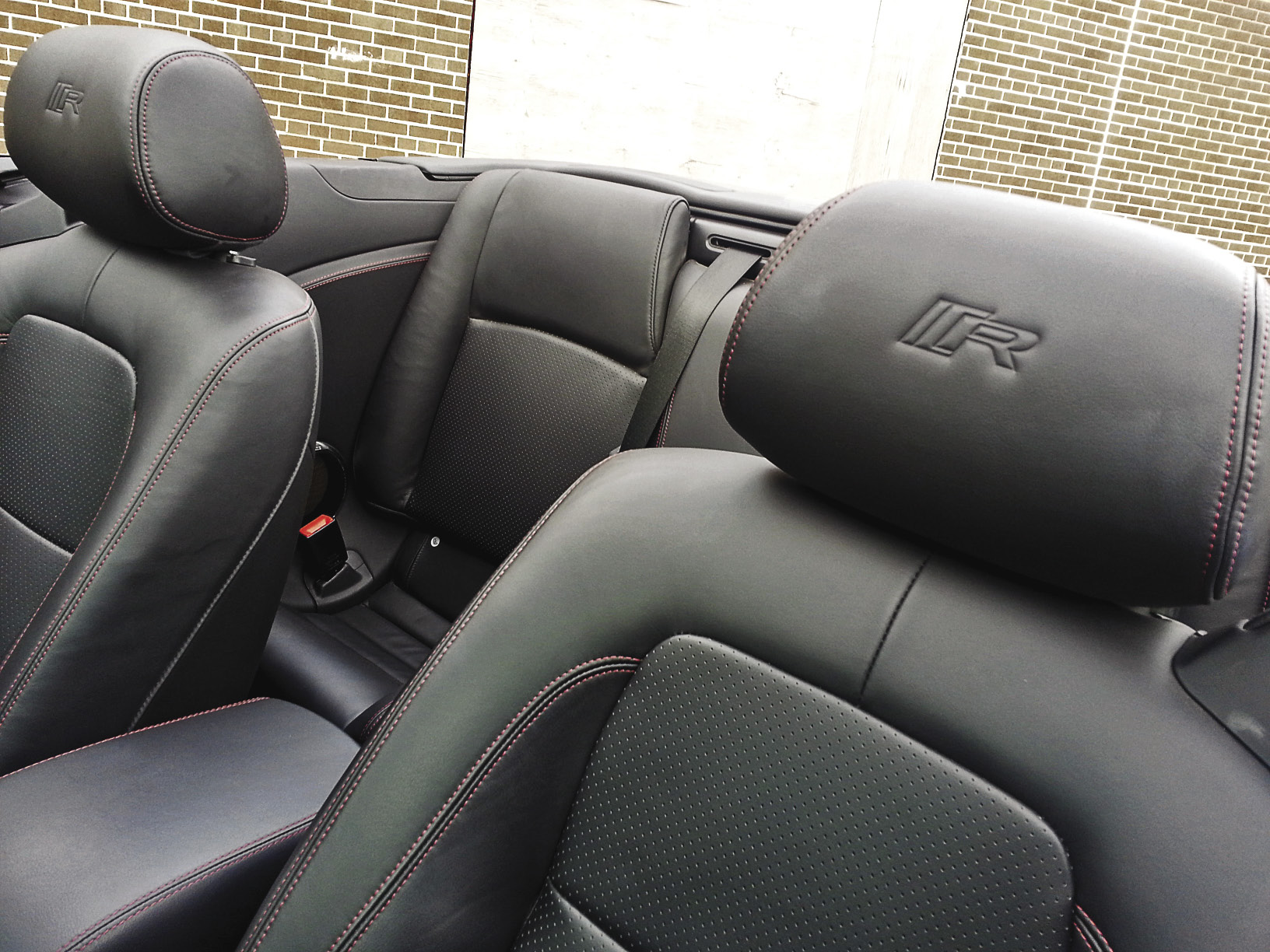

A push-button start – one of the biggest pieces of ‘me too’ technology in the industry these days – gets things underway, and the sound the Supercharged V8 makes when awakened is sonic nirvana. Simply put, the deep, guttural growl that accompanies the button push is music to my ears, the likes of which I never grew tired of hearing.
After firing up the engine, I was flummoxed for a brief moment because I wasn’t sure what to do with the round knob protruding out of the console. Soon it becomes clear the knob, which looks like it was lifted off of a high-end home theatre system, has to be rotated in order to engage the six-speed automatic transmission.
This rather novel choice for gear selection – officially dubbed JaguarDrive Selector – takes some getting used to, but it operates with smooth precision and works well with the sequential shift six-speed automatic. Naturally, I would prefer a clutch and a shifter – which isn’t available on any XK model, not even the 550 hp XKR-S, by the way – to a knob, but the steering wheel-mounted paddle shifters help to make up for it… sort of.
At any rate, once the XKR convertible is moving, it is an absolute delightful both in city traffic and at faster highway speeds; and, on track (presumably), although I didn’t have the opportunity to track it.
As mentioned previously, the XKR convertible (like other Jaguars) is filled with finely-crafted details that make for a rather unique and memorable driving experience. The metal accents in the dash and centre console, the Jaguar head logo on the steering wheel, the stitching in the seats and even the simple, yet elegant fonts used in the instrument cluster and on the navigation screen are all proof positive of attention given to the smallest details.
Filled with as much technology as it is, the XKR doesn’t overwhelm with tiny buttons and flashy gadgetry. The instrument cluster is almost plain in appearance – no TFT displays here – and while there are numerous things to adjust, the touchscreen multimedia/navigation hub is straightforward and easy to use.
The operation of the top is a technical marvel worth noting as well. Requiring the push of one button mounted in the centre of the headliner, raising and lowering the roof is (relatively) quiet, smooth and quick. Top up to top down and vice versa takes less than 20 seconds.
Fine, but what’s it like to drive?
In a word: fantastic. The XKR convertible is fast – twitchy fast – quiet, composed and refined.
The throttle response is very impressive and power delivery is quite linear. I didn’t record acceleration times, but the 2,185 kg cat climbed to triple digits in very short order. Suffice it to say that passing manoeuvres are not hard to execute in the XKR.
Peak torque output begins at just 2,500 rpm, so it’s not too hard to get the rear end to step out by stabbing the throttle while cornering. With the Dynamic Stability Control turned off, getting the rear end to break loose would not be hard to do, although it is not something I did myself. With that said, the car feels impressively planted to the ground. I didn’t hear any tire roar during a few hard cornering manoeuvres and body roll is minimal. This cat can dance.
The XKR convertible has driving modes that can be changed via buttons on the console. Dynamic mode produces slightly better throttle response and there is also a Winter driving mode designed to improve traction on snow and ice-covered roads, but I didn’t have the opportunity to try it during my fall test session.
The Servotronic 2 electric power steering unit in the XKR is designed to provide greater assist at lower speeds, which then gradually tapers off as speeds increase. To really get a sense of how well this translates into performance, it needs to be put to the test on the track. However, I was able to discern a difference in steering sensitivity at highway speeds. Overall, the steering provided good feedback in normal day-to-day driving conditions on public roads.
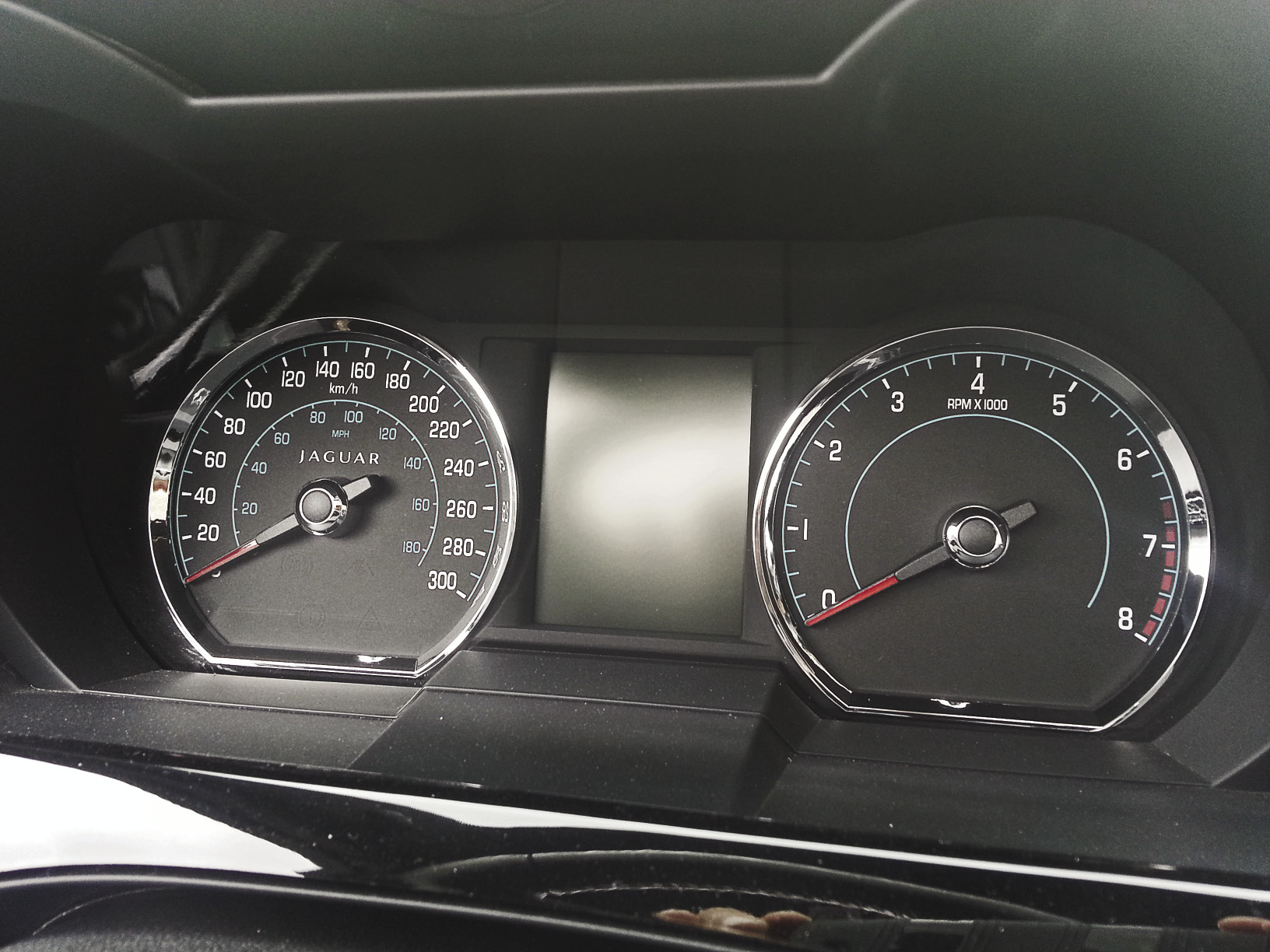 |
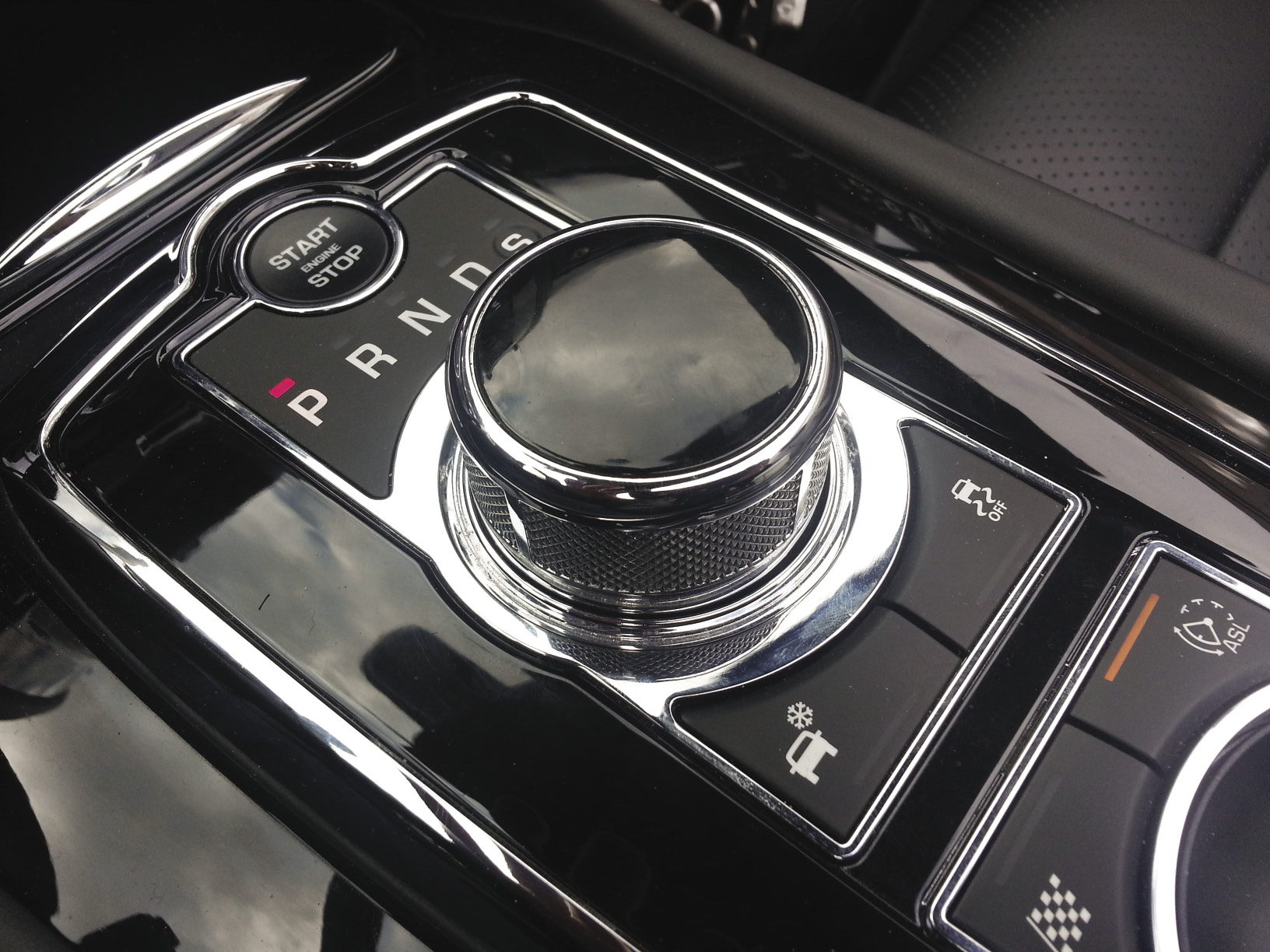 |
From a handling/ride perspective, the XKR convertible’s cabin is reasonably quiet with the top up, although the coupe is likely quieter. As mentioned, all XK models are aluminum bodied, which among other primary benefits, sheds weight and improves rigidity. The XKR is quick and feels quite nimble despite its long wheelbase and bulk.
Overall, the XKR convertible is one compelling package. It’s filled with fine craftsmanship and attention to detail, as one would expect from a Jaguar, especially one that starts at almost $120,000.
Even though it isn’t too exclusive in terms of price, the number of units produced or the manner in which it’s manufactured, the XKR convertible has the trappings – and the feel – of a low-volume, built-by-hand sort of car.
It feels like an exotic (even if it isn’t by definition) and that’s not a feeling I get with a lot of other luxury marques I drive. I think that at least partially encapsulates the difference I was trying to put my finger on when I began by mentioning there’s something different about fine British luxury cars.
Just being able to drive a car like the XKR convertible – much less own one – is a rare experience, one that should be enjoyed to the fullest.
Specifications
2013 Jaguar XKR Convertible
Base Price: $116,125
Engine: Supercharged 5.0L DOHC V8
Horsepower / Torque: 510 hp / 461 lb.-ft
Configuration: FR
Transmission: 6-speed automatic
Fuel Economy Ratings: 18.9 / 8.6 L/100 km; 15 / 22 mpg (city / hwy.)
Red Painted Brake Calipers ($500)
20-inch Kalimnos alloy wheels (painted finish) ($4,000)
Heated Windscreen ($300)
Performance Active Exhaust ($1,500)
A/C Tax: $100
Freight: $1,350
Price as Tested (before taxes): $123,875
Basic Warranty: 48 months / 80,000 km






















